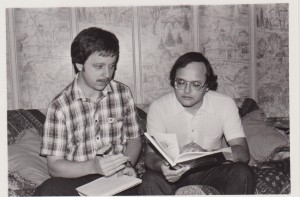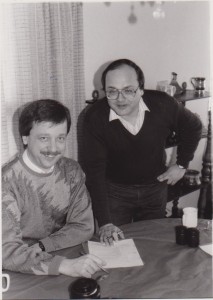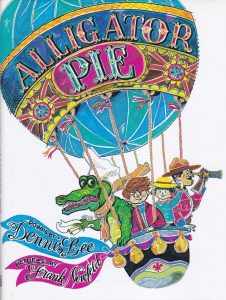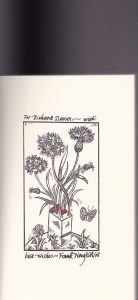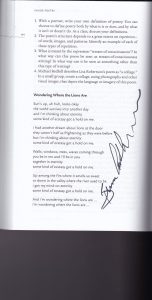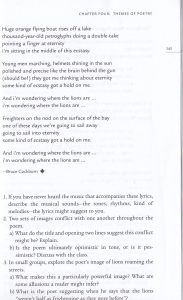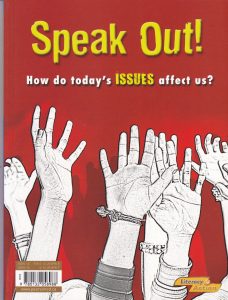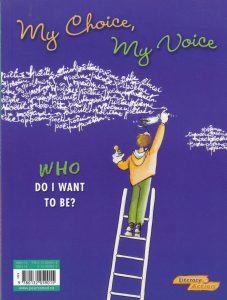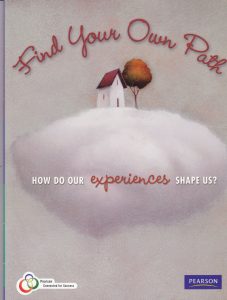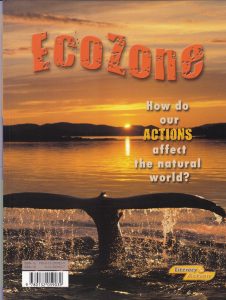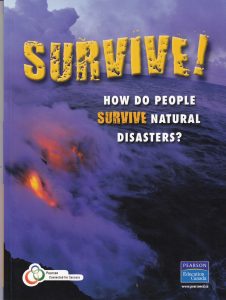‘There’s nothing half so real in life as the things you’ve done,” she whispered, ‘inexorably, unalterably done.’–Margaret Ayer Barnes
Hard to believe I wrote and edited 28 student textbooks and 22 teacher’s guides in a span of 38 years of publications for senior high ELA students, the totality of which went platinum (1 million sold) back in 2014. Amazingly, I still continue to receive royalties from these books in 2020. I am not aware of any other ELA authors (all grades) in Canada exceeding these numbers.
(1978: Edmonton’s Glen Kirkland and RD–the educational author duo starting out, in a basement I had just finished myself; 2nd pic: 1980s; we would eventually go on to present workshops across Canada and became well-known in the national senior high ELA teacher community; I should add that we first met in an evening grad ED CI class of 3 people at U of A–the basis for the series evolved out one of our assignments; when we decided to publish something based on this project, we, at first, considered our textbook-prof as a go-to, but he had literally stolen someone else’s project for a book not his own, so we tried a small T.O. publisher Methuen, instead, who turned us down, saying it was too expensive for them–they subsequently went under after this, coincidentally; Gage, represented by the debonair Patrick Paddy Drysdale, signed us on to do the series in a hot summer hotel room at the Macdonald in Edmonton.)
(1980, Gage, for grades 9-10: The first book of a new series for general/nonacademic students which introduced relevant thematic literature to these courses and streams; I have my first-ever textbook-published poem, “Fall” in this one; Trinidad’s Anthony Luengo at Gage held the whole project together)
(we were also incredibly fortunate to have, as our illustrator, Frank Newfeld, who did half of the visuals and the covers for the first series and the later redo); much later, I thanked Frank for what he contributed to this successful project and he signed a copy of his book, Type, for me)
(1981, Gage, for grade 11)
(1981, Gage, for grade 12: another of my poems, a found poem satirizing advertising appeared in it; this was also the first time we experienced censorship–NL did not authorize this one because of Morley Callaghan’s “A Sick Call”; their response was “Priests don’t lie”; another story, Hugh Garner’s “The Yellow Sweater” also raised some politically incorrect eyebrows for its subject matter–a man picking up a nervous teenage hitch-hiking girl.)
(1984: Harcourt, for grade 11, but it also got used in 10 or 12; there were too many T.O. lunch-hour cocktail-snobs who moved in at Gage and so we took our next book elsewhere when they told us “we’d never publish it with anyone but us”; so we stuck to our guns and went to Harcourt who greedily latched onto what became the poetry book of the 1980s and they published what we wrote and edited as is, no changes; this was the beginning of a long harmonious, profitable relationship with them; incidentally, IP includes my poem about a city traffic accident and a couple of essays on two book poems by my gr. 11 McNally students.)
(1986: Gage–the thematic book of essays for grade 11-12 in the 1980s; we amicably got what we wanted with this one from Gage)
(1987, Harcourt, a short story anthology of short stories, organized by fictional elements: widely used in Canada, especially AB, BC, MB, and NS; sold 20,000 copies out of the gate to BC as did IS 2; the trust with Gage forever tainted now, we moved back to Harcourt who remained more keener allies; I suggested the book’s illustrators; an irrational censorship dispute, covered by a former student on CBC, arose in Ponoka-Rimbey district when one councillor took exception to Shirley Jackson’s “The Witch” for its ‘unwholesome supernatural influence’; their solution: they razor-bladed the ‘offensive’ pages out of the book despite teacher protestations.)
(1987: Harcourt: both anthologies were the beginning of a long positive relationship with editor Lydia Lou Fletcher)
(1990, Gage: the revised series did well across Canada; Gage basically left us alone again for this one; it got used in grades 9-10; “Fall” was reprinted)
(1990, Gage: used in grade 11)
(1990, Gage, for grade 12; the Connections series had become legendary by this point)
(1993, Harcourt–so what about a story anthology, organized by fictional terms for gr. 12; troubled publisher-friend Murray Lamb–who later died suddenly and tragically–took us up on this one)
(1995, Harcourt: as school budgets began to dry up, we did a cool anthology on the theme of choices–one of our least successful books)
(1996, Gage: back to Gage for another thematic anthology, as a successor to Dimensions–we had a good editor, Laura Edlund for this one; Glen, sadly, began to get sick and have problems with alcohol and sleep apnea, eventually going through many health problems including a few cancers before his passing in 2010; he was never the old mentally sharp, ‘with it’ Glen after this book)
(1999, Harcourt, a thematic short story anthology for grade 9-10: Glen was M.I.A. for the most part on all the books that followed, but I agreed to leave his name on the covers and title pages, figuring his well-known name and the appearance of teamwork would help continue sales and in the hopes that he might still recover.)
(1999: Harcourt–a thematic short story anthology for grade 11; I can remember planning these books with Harcourt’s Lydia at Glen’s work, as he sadly slept through the meeting; it was very clear to her and me that I, at this point, was the real Davies and Kirkland team.)
(2000: Harcourt, a thematic short story anthology for gr. 12; I had several projects on my hand and it was time to work with someone else; Jerry Wowk was the perfect pick and he did all the support material in the textbook while I picked the themes and stories; I also contributed an essay about teaching Graham Greene’s classic “The Destructors”.)
(2000, Gage; our first handbook for senior high; this book continues to sell 20 years later; Glen, surprisingly, was able, somehow, to contribute a few sections to this project, but this was his last hurrah.)
(Gage, true to form, kept us in the dark about this alternate version with a more practical coil binding; yeah, this is the one they should have published–lies flat when open, doh)
(2000: Gage–a remake of Connections I for grade 10; a nasty nervous-breakdown kinda contract dispute ensued–‘Davies and Kirkland’ stayed with Gage for our last book with them, one they finished to their liking; despite Glen’s name being credited, whatever literature is in the book was my contribution–he was pretty much out of the picture and I professionally parted company with him about this time; what a crazy 3 years doing all these books mostly by myself–I was down to teaching halftime in 2000-2001 as I also worked half-time at Alberta Film Classification; this book would be Gage’s last hurrah–they would fold soon afterward in 2003 as budgets really dried up after the 2000 round of authorizations hither and yon)
(2002: Nelson–a grade 11 replacement for Connections 2; Nelson was keen to have ‘Davies and Kirkland’ before they also realized he was very ill; I kept Glen’s name on the cover one last time as an unsung contribution to his retirement fund–in reality, this is another book without him)
(2002, Nelson; credited as my book, a grade 12 thematic anthology replacing Connections 3; I had good editors to work with on the home stretch, notably Caron MacMenamin; as one of several homages that were to follow, I used two of Glen’s poems, both which remain/ed popular.)
(2002, Harcourt–the revised Inside Poetry, I selected all the poems and wrote the text, Jerry ably did the questions and supporting material; this was the last hurrah for Harcourt who folded in 2004, and the end of another era)
(I had the pleasure recently of having Bruce Cockburn sign my copy; I used many of his songs over the years and we finally got to meet at at the best-ever BC concert I’ve heard of many, this one locally at the Winspear.)
(2008: Nelson–a revision of the Gage handbook; our last for Nelson; this was a special publication commissioned by NL which had a huge guaranteed pre-sale; I was reunited with my old Gage Connections editor-friend who was then freelancing–Tony Luengo of TO; he is the best editor I ever had; Jerry and I dedicated the book to Glen and included an essay on Tennyson’s “Crossing the Bar” by my son; I also contributed a short short story, a poem, a profile of Sidney Crosby, and a movie review about Into the Wild)
(2005-2006, Pearson: a new publisher again–6 magazines for junior high with a stellar author team which met in Vancouver and Toronto; Jerry and I were mostly involved in the planning and pre-writing, but we still receive royalties from the series)
(that was easily the most formidable editorial team I was ever involved with)
So there you have it: 28 textbooks with four publishers that continue to be used today along with 22 teacher’s guides not pictured above. I’ve been a little hesitant to say so thus far, but I have had ‘A Brilliant Career’ in education, educational publishing, and educational workshops.
Thank you again to the many fine co-writers, editors and publishers I worked with along with the many thousands of teachers and convention hosts involved in my workshops and presentations from 1980 to 2010 A.D. And a special nod, too, to the 3,000-5,000 students across Canada who used these works over the years (1980-now) and may have found something relevant and inspiring in the process.

